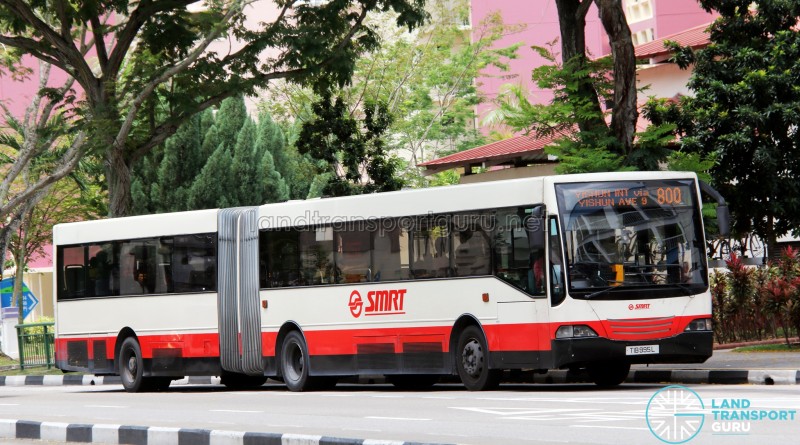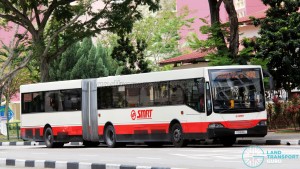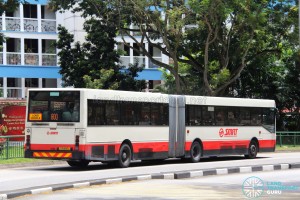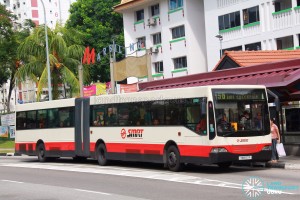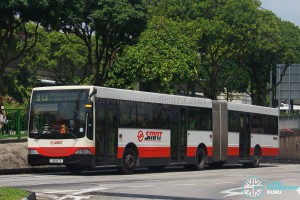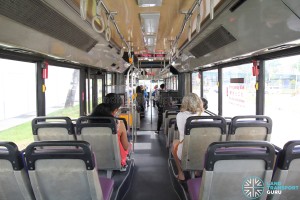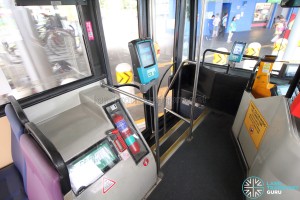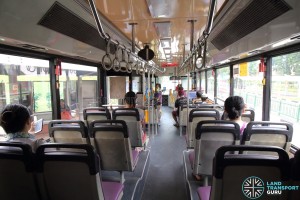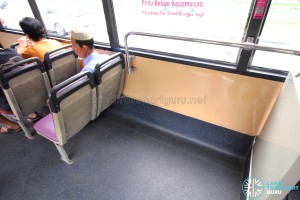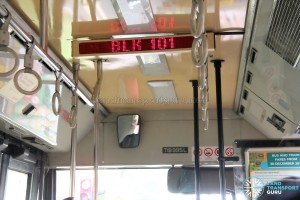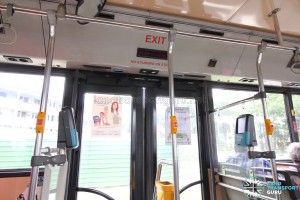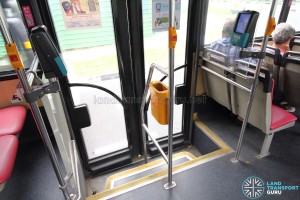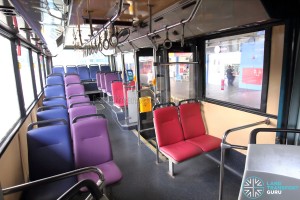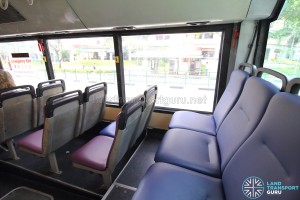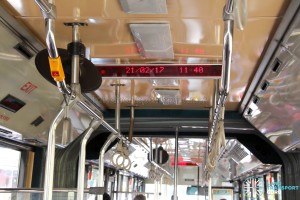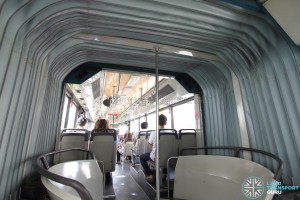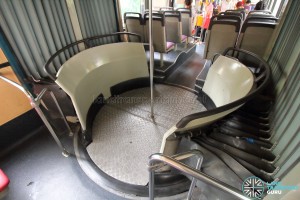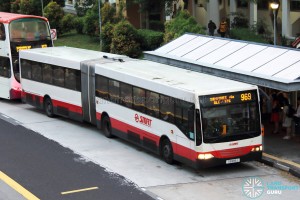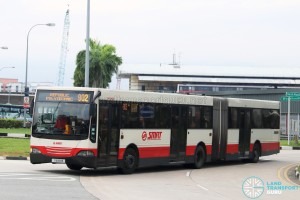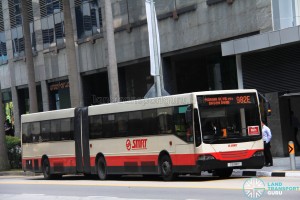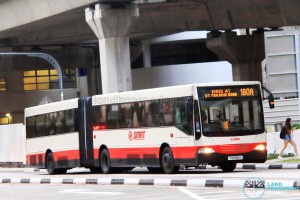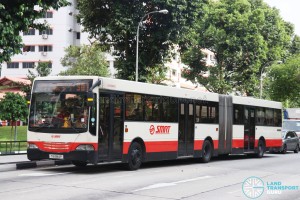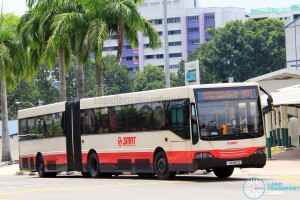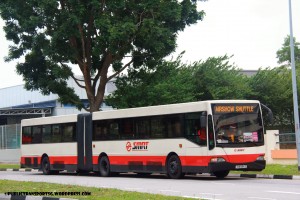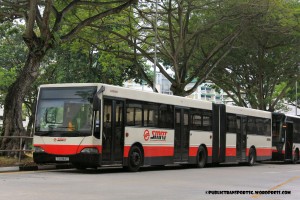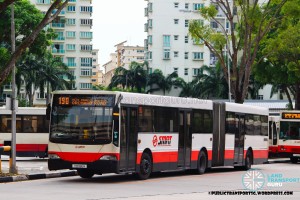Main Article: Mercedes-Benz O405G
The Mercedes-Benz O405G (Hispano Carrocera Mark II) is the second generation of Mercedes-Benz O405G articulated buses acquired by Trans-Island Bus Services (TIBS), the predecessor of SMRT Buses.
Apart from an updated exterior design, the O405G Hispano Mark II buses are similar to the earlier Hispano Mark I buses and later Hispano Habit buses in terms of technical specifications and interior layout.
Built in 1999, twenty-nine (29) buses of this type were built and entered service in the Year 2000. They would be fully retired by March 2017.
Introduction
After the intake of the O405G Hispano Mark I buses, Trans-Island Bus Services (TIBS) placed an additional order for 29 units; however, the Mark 1 bodywork was out of production. Hispano Carrocera devised a new bodywork largely based on the Mark 1 with improved aesthetics, hence the Hispano Carrocera Mark 2 bodywork was born, with its main distinguishing feature being its curved front design.
These 29 buses were registered between 11 January 2000 and 8 March 2000 as TIB973A – TIB1001Z.
| Basic Technical Specifications | |
| Engine | Mercedes-Benz OM 447 hLA engine Inline 6-cylinder turbocharged, 11967 cc, Euro I Power/Torque rating of 299 hp (220 kW) @ 2200 rpm / 1250 Nm @ 1000 – 1300 rpm |
| Transmission | ZF Ecomat 4HP 590 gearbox, four-speed automatic |
| Bodywork | Hispano Carrocera (Mark II) Bodywork Chassis produced in Germany. Bodywork supplied by Hispano Carrocera of Spain. |
| EDS | Mobitec MobiLED Electronic Display Signage (EDS) Orange LED Matrix design Original model: Transit Media TwinVision LeDot (Green flip-dot) TIB994P: LAWO BENEFIT (Orange LED) |
| Doors | Bode-Masats doors Electrically-operated Double-leaf doors for entrance and both exits |
| Capacity | Licensed capacity of 149 passengers: 59 seating and 90 standing passengers |
Additional Specifications:
The design of the Hispano Mark II bodywork is distinctively different from the Mark 1, featuring improved aesthetics. It is sometimes nicknamed “smiley bendy” for the curved metal design at the front. Only 29 units were acquired, all of which were registered in the Year 2000.
The bodywork design, especially the head of the bus, might have incorporated several design elements from the first-generation Citaro buses launched in 1997 while having no relation to the integral Citaro product offered by Mercedes-Benz or Evobus. This has led to some sources of information incorrectly referring to these buses as the “Hispano Citaro”.
These buses were fitted with a standard Mercedes-Benz OM447hLA engine paired with a ZF Ecomat 4HP590 four-speed automatic transmission, similar to the previous 57 units bodied with the Hispano MkI bodywork. Bodied by Spanish company Hispano Carrocera, underfloor air-conditioning was supplied by Konvekta, and three sets of dual-leaf inward-gliding doors were supplied by Bode Masats. All doors were operated with electric motors, in contrast to pneumatic doors used on previous and later Mercedes-Benz O405Gs.
At delivery, these buses were fitted with a set of TwinVision LeDot Electronic Display Signage (EDS) supplied by Transit Media. These Green Flip-Dot type EDS units had LEDs behind each individual flip-dot for improved visibility, as compared to the older Flip-Dot units on the Hispano MkI which used fluorescent lamps for illumination.
Refurbishment / Modifications
All buses of this batch underwent mid-life refurbishment, which involved refitting the interior of the bus with new equipment. Body panels and air-conditioning ducts were repainted/replaced, and synthetic fabric seats covers replaced the original olive green fabric covers which often trapped plenty of dust.
Buses were refurbished in two phases. The earlier batch received violet seat covers with crimson for priority seats. The later-refurbished buses received a mix of blue and purple seat covers with red for priority seats.
Along with refurbishment works, buses were refitted with Mobitec MobiLED Electronic Display Signage (EDS) units of the Orange LED matrix design on the front, side and rear, replacing the older Green Flip-dot units. TIB994P is an exception, with a LAWO Benefit EDS unit, also of the Orange LED matrix design.
TIB984T and TIB986M have modified fronts, with a slight resemblance to the Volgren front. TIB986M received the modified front after an accident, while the cause of TIB984T’s modification is unknown (see Gallery at bottom of page).
Interior:
The interior of the bus has two cabins permanently joined by an articulation unit. The bus seats four-abreast with a central aisle running the length of the bus. Grab poles and round hand grips are located on both sides of the aisle, with additional handrails at the standing area, or stanchion poles near the exits or articulation unit. All seats also have hand grips to provide commuters with additional support.
Bus stopping bell-pushes are located around the bus cabin, either mounted to stanchion poles or on the pillars in-between windows. Emergency hammers are also located on these pillars.
The front cabin has a front entrance door and middle exit door, with a small standing area opposite the exit door. Four rear-facing seats are located just behind the front axle wheel wells. A Passenger Information System (PIS), a LED text display, shows the next bus stop name, along with “Bus Stopping” if the stop button has been pressed.
The rear cabin only has front-facing seats and a third exit door, and the last row of the bus has five seats.
The first-generation Passenger Information System (PIS), formerly located at the front of the bus, was relocated to the rear cabin and only shows the day, date and time.
Finally, the articulation unit consists of a turntable platform with two hinges in the middle, allowing for both pitch and yaw motion. Folding bellows help weatherproof the articulation unit. A single stanchion pole is also installed in the middle for additional support.
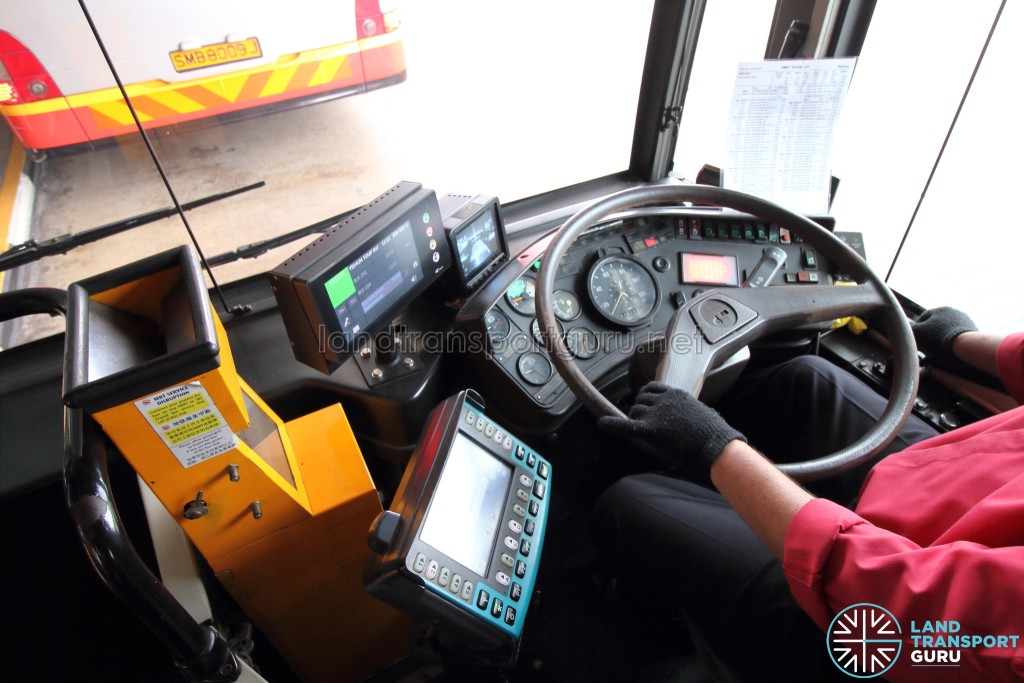
Gallery:
Gallery: (Modified front)
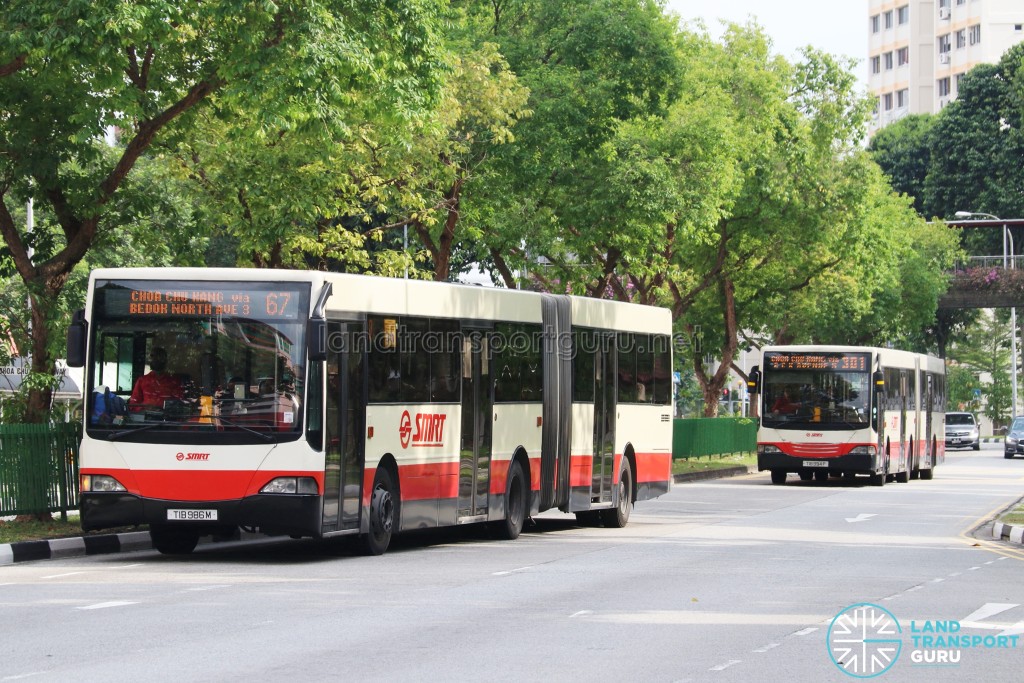
External Links & References:
Back to Mercedes-Benz O405G
Back to Bus Models
Back to Bus
